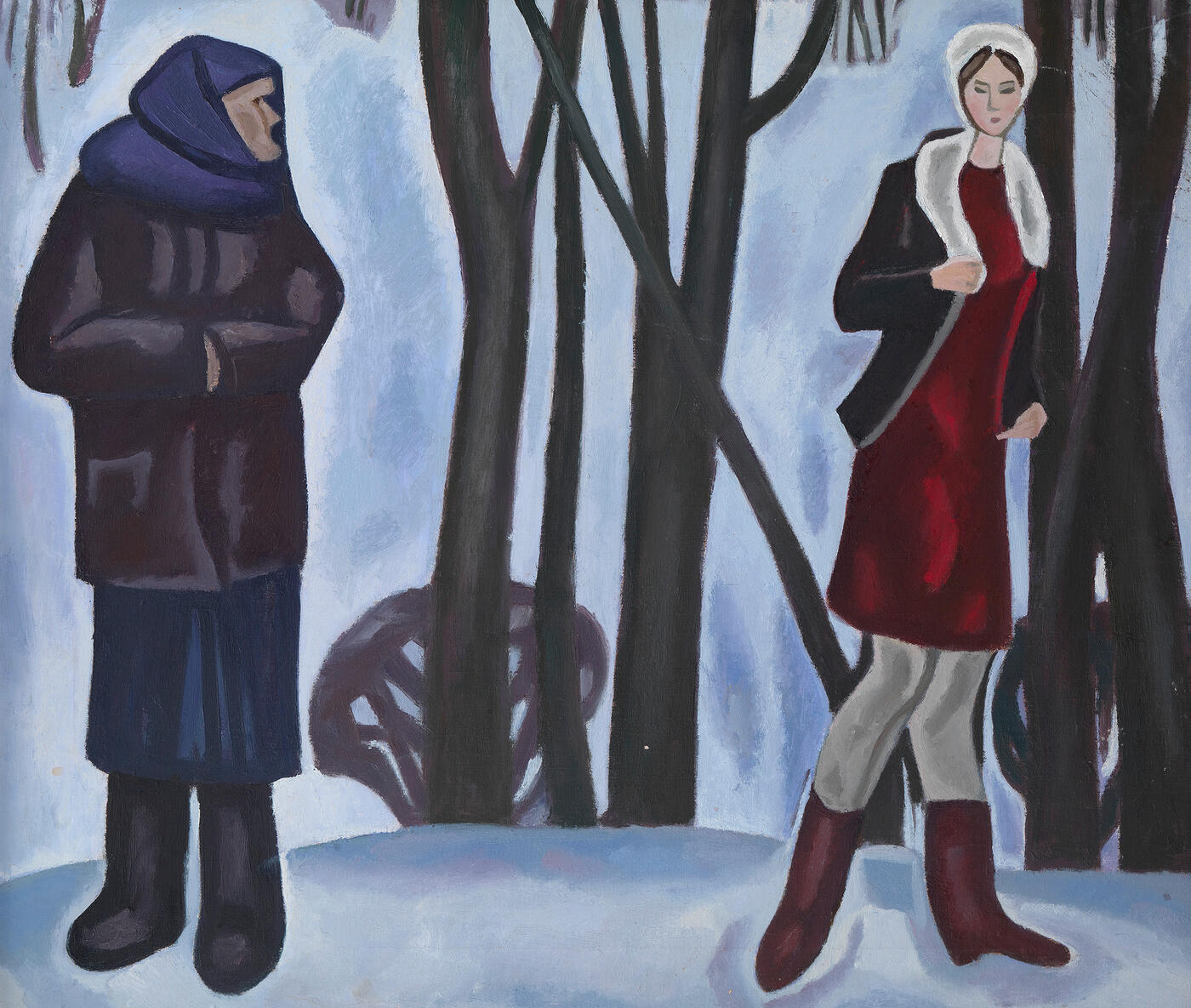3 June 2015 Russian Art Auctions
3 June 2015

102. POPKOV, VIKTOR (1932-1974)
Two Women, signed and dated 1967 on the reverse, further inscribed in Cyrillic "Moi den'" on the stretcher.
Oil on canvas, 60.5 by 70 cm.
15,000-20,000 GBP
The present lot is a study for the painting My Day, 1968, currently in the collection of the State Tretyakov Gallery.
Provenance: Acquired directly from the artist’s family by the present owner.
Private collection, UK.
Exhibited: Severity of Style, MacDougall’s, London, 1-14 May 2015.
Every time that Soviet art of the 1960–70s is mentioned, its achievements are characterised as “the legacy of the Thaw”: an austere romanticism that rehabilitated revolutionary ideals – not in their parading and boastful manifestation but rather in their “true” colours, turning towards the real human values of daily routines, festivities and mundane life in general – cleansed of the sentimental gloss of the “sunny idyll”. The collection offered here at auction is unique in that the artists and pictures it encompasses are strikingly different from the dominant artistic canon of the time. There is not even a trace of the romance of building Socialism and conquering nature. On the contrary, this collection of the works in the “severe style” heralds the formation of a new, independent phenomenon of nascent aestheticism – the cult of “proper painting” and of virtuoso technique.
A lyrical line develops from Viktor Popkov and Nikolai Andronov's landscapes painted in the North of Russia to Popkov's striking female images, his self-portrait embodying all of the “creative intelligentsia”, the utopia of a world transformed by science in Floating in a Dream; and also to later works, such as Alexei Gritsai's Evening Light, with its splendidly striking “Grabaresque” technique and Pavel Nikonov's Fireworks, rendered in the technique typical of the Paris School.
The main subjects addressed by the artist of the “severe style” – a human being outside of the social hierarchy and unembellished nature – remain the same, but the view of them changes. The mythology of spring and awakening of nature, similar to a “thaw”, is replaced instead by endless autumn rains and gloomy landscapes. When artists defiantly distance themselves from politics, it inevitably leads to a retreat into private life and an apologia for individualism. By the beginning of the 1970s, the severe truth of life no longer bears any heroic stamp, but is turned into a backhanded, candid swipe. This candour is seen not as openheartedness, warmth, trust, readiness to compromise or empathy – but rather the opposite – a candid expression of depressive, private experiences, complex psychological states of mind and anxieties.
The art of this period is notable for its propensity to ponder over issues relating to the human condition in general, intergenerational dynamics and to ageing. The lyrical strand in Popkov and Nikonov’s works and that of other artists of the “severe style” in the 1960s, maintain to the end – despite their existentialist bent – the candid and surprisingly optimistic message of early Soviet art. There is present a degree of sincerity, a pulsating intensity and an injection of the humanism intrinsic to the “severe style”. There is equally present a desire to serve Communist ideals, cleansed and reformed, and an ethic of moral duty towards Soviet community rather than subservience to authority. It is precisely these things that remove the tarnish of servility from this art, despite its affiliation with officialdom and the trend taking shape by the late 1970s, whereby it evolved into the monumental Grand Art of the Soviet epoch. All these things ensure that art of the “severe style” is to be taken seriously, cleansed of any reservations and presented before the public as one of the most outstanding and significant periods in the art history of the 20th century.
Notes on symbols:
* Indicates 5% Import Duty Charge applies.
Ω Indicates 20% Import Duty Charge applies.
§ Indicates Artist's Resale Right applies.
† Indicates Standard VAT scheme applies, and the rate of 20% VAT will be charged on both hammer price and premium.